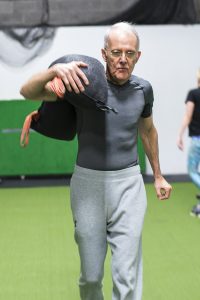As I was cooling down after a workout at the gym this week, a friend came up to me with a question I’ve heard more than once.
“Jim, I don’t get it,” he exclaimed in frustration. “I work out all the time, but I’m not getting any results. What’s the secret?”
It’s true that I often ran into him at the gym, but I’d never seen him do anything but walk on the treadmill at an easy pace. There’s nothing inherently wrong with that, and any exercise is better than none. But would that alone help my buddy get leaner, faster, and stronger? Not a chance.
 What the science tells us
What the science tells us
The reason why goes back to the principle of progressive overload, which was developed by a military doctor as he rehabilitated soldiers after World War II. It became one of the foundations of modern exercise science. In essence, it states that to improve any kind of physical performance, you’ve got to ask your body to do just a little bit more than it could do before. That’s how to stimulate positive adaptations that make a measurable difference over time.
Joe Talbert, a top trainer at Denver’s Greenwood Athletic and Tennis Club, puts it succinctly: “If you want to improve, you need to get comfortable with being uncomfortable. That’s how you get stronger and better.”
Expanding your comfort zone
By no means am I saying you have to drive yourself to the limits with every exercise. That will only lead to burnout or injury. But if you want to make real fitness gains, get in the habit of pushing gently to the edge of your comfort zone at least once in every workout…and then go a little beyond.
For instance, my friend could increase his pace or incline for part of his treadmill session. If you’re doing strength training, you can add repetitions, work on range of motion, get strict with exercise form, or gradually increase weight. (Chapter 8 of my book offers more ideas.)
Here’s a tip I use myself: every workout, I do at least one exercise I absolutely hate (burpees, anyone?). If I hate it, it probably hits an area of weakness…which means it’s something I really need to be doing. Even if you don’t draw on your most-hated list, you can pick one thing in each session—just one—to work on. Try it, and you might be surprised by how quickly you progress.
Image: Matthew Pardue